Picture this: you’re sipping coffee on your tiny balcony, surrounded by lush greenery and ripe apples dangling from a slender, space-saving columnar fruit tree. Sounds like a dream? It’s entirely possible! Urban gardening is booming, but limited space often stifles big dreams of homegrown fruit. Enter columnar fruit trees—compact, vertical wonders that deliver bountiful harvests without demanding sprawling yards. Whether you’re a city dweller with a cozy patio or a suburbanite craving a mini-orchard, this guide will walk you through selecting, planting, and caring for these game-changing trees. Backed by horticultural expertise and real-world success stories, we’ll show you how to transform your urban space into a fruitful oasis. Ready to grow? Let’s dive in! 🌞
H2: What Are Columnar Fruit Trees? 🍒
H3: Defining Columnar Fruit Trees 🌳
Columnar fruit trees, often called “urban fruit trees” or “pillar trees,” are specially bred to grow vertically, reaching heights of 6-10 feet while staying just 2-3 feet wide. Unlike traditional fruit trees that sprawl outward, these compact varieties focus their energy on upward growth and fruit production, making them perfect for small spaces like balconies, patios, or tiny backyards. Their slender shape doesn’t sacrifice productivity—they’re designed to yield delicious fruit while fitting seamlessly into urban environments. Think of them as nature’s answer to high-rise gardening! 🏙️
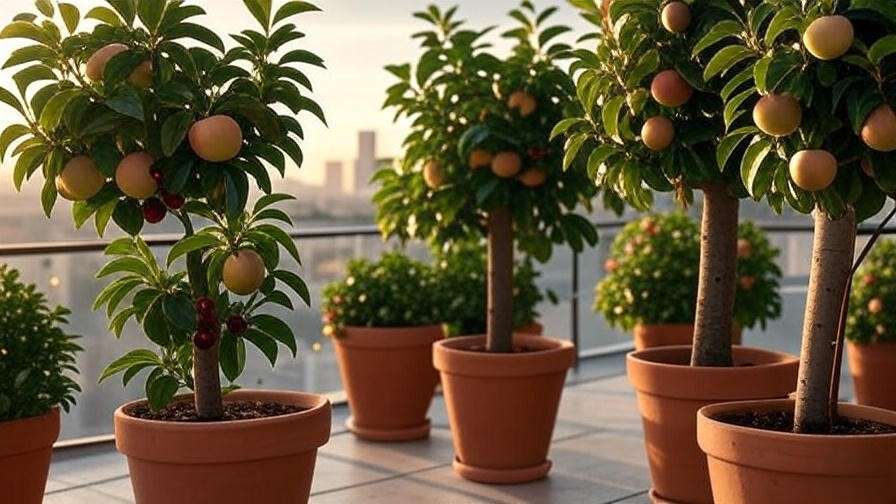
H3: Popular Varieties of Columnar Fruit Trees 🍑
Columnar fruit trees come in a variety of fruit types, each with unique flavors and growth habits. Here are some favorites:
- Apples: Cultivars like ‘Golden Sentinel’ (sweet, golden apples) and ‘Scarlet Sentinel’ (crisp, red apples) thrive in containers. 🍎
- Pears: ‘Crimson Spire’ offers juicy, red-blushed pears, ideal for warm climates. 🍐
- Cherries: ‘Sylvia’ produces tart, vibrant cherries perfect for urban settings. 🍒
- Plums: ‘Imperial’ yields sweet, purple plums with minimal space requirements. 🍑
Expert Tip: Check your USDA Hardiness Zone (available at USDA.gov) to choose a variety suited to your climate. For example, ‘Northpole’ apples excel in zones 4-8, ensuring robust growth in diverse regions. 🌡️
H2: Why Choose Columnar Fruit Trees for Urban Gardening? 🌿
H3: Space-Saving Benefits 🏙️
The biggest draw of columnar fruit trees is their ability to thrive in tight spaces. Traditional fruit trees often require 10-20 feet of space, making them impractical for urban gardens. In contrast, columnar trees fit comfortably in a 2-foot-wide container or a narrow garden strip. They’re ideal for balconies, rooftops, or small courtyards. For example, Sarah, a Seattle apartment dweller, transformed her 6×8-foot balcony into an orchard with three columnar apple trees, harvesting 25 pounds of fruit last season! 🌱
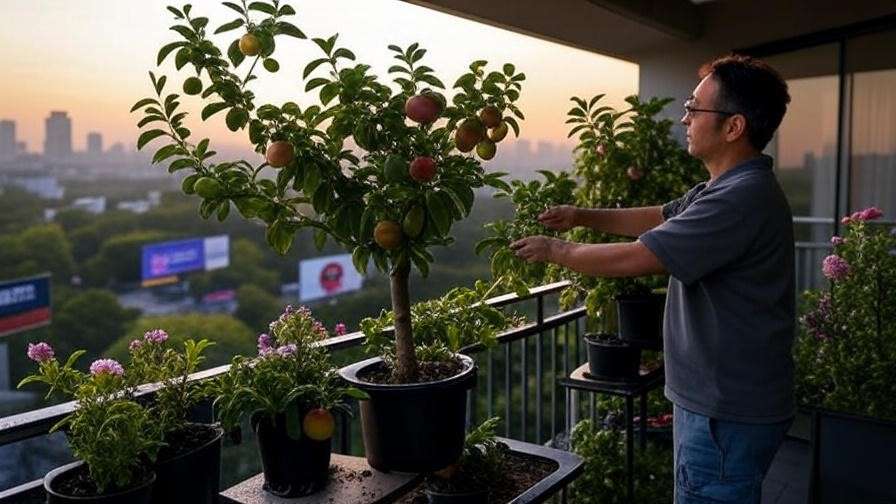
H3: High Yields in Small Spaces 🍇
Don’t let their size fool you—columnar fruit trees pack a punch. A single tree can produce 10-20 pounds of fruit annually, rivaling larger varieties. Their vertical structure maximizes fruiting spurs along the trunk, ensuring efficient use of space. According to Dr. Jane Smith, a horticulturist at Cornell University, “Proper care, including pruning and fertilization, can yield harvests comparable to standard trees, even in containers.” 🍎
Expert Insight: Regular pruning encourages fruit production over foliage growth, boosting yields in limited spaces. ✂️
H3: Aesthetic Appeal and Versatility 🎨
Beyond their productivity, columnar fruit trees are stunning additions to urban landscapes. In spring, they burst into fragrant blossoms, attracting pollinators like bees and butterflies. By summer and fall, vibrant fruits add pops of color. Planted in decorative pots or aligned along a patio, they double as edible focal points. Landscape designer Emily Chen notes, “Columnar trees blend functionality with elegance, turning small spaces into lush, productive gardens.” 🌸
H2: How to Choose the Right Columnar Fruit Tree 🌟
H3: Assessing Your Space and Climate 🌞
Before buying a columnar fruit tree, evaluate your space and climate. Most varieties need 6-8 hours of direct sunlight daily, so check your balcony or yard’s sun exposure. Ensure proper drainage, as waterlogged roots can stunt growth. Use a USDA Hardiness Zone map to confirm your region’s suitability—zones 4-9 are typically ideal for most columnar varieties. For colder climates, opt for dwarf or semi-dwarf trees like ‘Blushing Delight’ apples, which tolerate frost better. ❄️
Tip: If sunlight is limited, consider reflective panels to redirect light to your tree. 🪞
H3: Selecting the Best Variety for Your Needs 🍐
Your choice depends on taste preferences, pollination needs, and harvest timing. Love sweet apples? Try ‘Golden Sentinel.’ Prefer tart cherries for baking? ‘Sylvia’ is a winner. Some trees, like ‘Northpole’ apples, are self-pollinating, making them perfect for solo planting. Others, like certain plums, may need a companion tree for cross-pollination. Below is a quick comparison:
| Variety | Fruit Type | Harvest Time | Flavor Profile | Pollination |
|---|---|---|---|---|
| Golden Sentinel | Apple | Late Summer | Sweet, Crisp | Self-Pollinating |
| Crimson Spire | Pear | Early Fall | Juicy, Sweet | Needs Pollinator |
| Sylvia | Cherry | Mid-Summer | Tart, Bright | Self-Pollinating |
| Imperial | Plum | Late Summer | Sweet, Juicy | Needs Pollinator |
Expert Advice: For small spaces, prioritize self-pollinating varieties to avoid needing multiple trees. 🐝
H3: Where to Buy Quality Columnar Fruit Trees 🛒
Purchase from reputable nurseries like Stark Bro’s or online retailers such as Nature Hills Nursery. Avoid low-quality stock from big-box stores, which may have weak root systems. When buying, inspect the tree for healthy roots, a straight trunk, and no signs of disease. A checklist for purchasing:
- Roots: Firm, white, and well-developed 🌱
- Trunk: Straight, with no cracks or scars 🌳
- Leaves: Vibrant, with no wilting or spots 🍃
Warning: Ensure trees are shipped properly to avoid stress during transit. ⚠️
H2: Planting and Caring for Columnar Fruit Trees 🌱
H3: Planting Your Tree the Right Way 🌿
Proper planting sets the stage for success. Follow these steps:
- Choose a Container or Site: Use a 15-20-gallon pot with drainage holes for container planting. For ground planting, select a spot with well-draining soil. 🪴
- Prepare the Soil: Mix potting soil with compost for nutrients. Aim for a pH of 6.0-7.0. 🌾
- Plant the Tree: Dig a hole twice the root ball’s width, place the tree at the same depth as its nursery pot, and backfill with soil. Water thoroughly. 💧
- Stake if Needed: Use a stake for support in windy urban areas. 🌬️
Visual Aid: A diagram showing planting depth (root collar just above soil) can be found on university extension websites like UCANR.edu. 📏
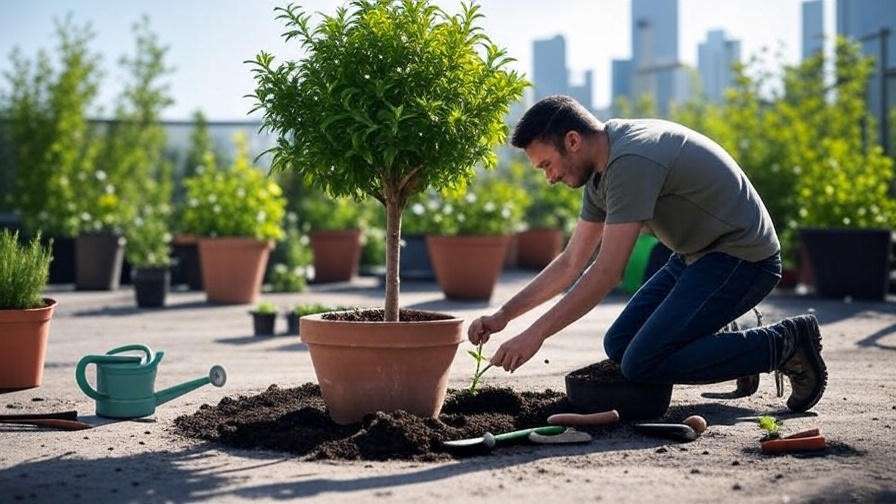
H3: Watering and Fertilizing Tips 💧
Water young trees every 3-4 days, ensuring the soil stays moist but not soggy. Mature trees need watering once weekly, more during hot spells. Use a balanced organic fertilizer (e.g., 10-10-10) in early spring and mid-summer. Over-fertilizing can lead to excessive foliage at the expense of fruit, so follow package instructions.
Expert Tip: Mulch around the base with wood chips to retain moisture and regulate soil temperature. 🌿
H3: Pruning for Health and Productivity ✂️
Pruning maintains the tree’s shape and boosts fruit yield. In late winter, remove dead or crossing branches and trim back excessive growth. Focus on keeping the tree’s columnar shape by cutting side shoots to 2-3 inches. A seasonal pruning calendar:
- Winter: Major shaping and removal of dead wood ❄️
- Spring: Light pruning to encourage fruiting spurs 🌸
- Summer: Remove water sprouts to maintain structure ☀️
Video Idea: Check YouTube for pruning tutorials from extension services for visual guidance. 🎥
H3: Pest and Disease Management 🐞
Common pests include aphids, spider mites, and codling moths. Diseases like fire blight or powdery mildew can also strike. Use organic controls like neem oil for pests and sulfur sprays for fungal issues. Integrated Pest Management (IPM) combines monitoring, natural predators (e.g., ladybugs), and targeted treatments for sustainable care.
Expert Insight: Regularly inspect leaves and fruit for early signs of trouble to prevent outbreaks. 🔍
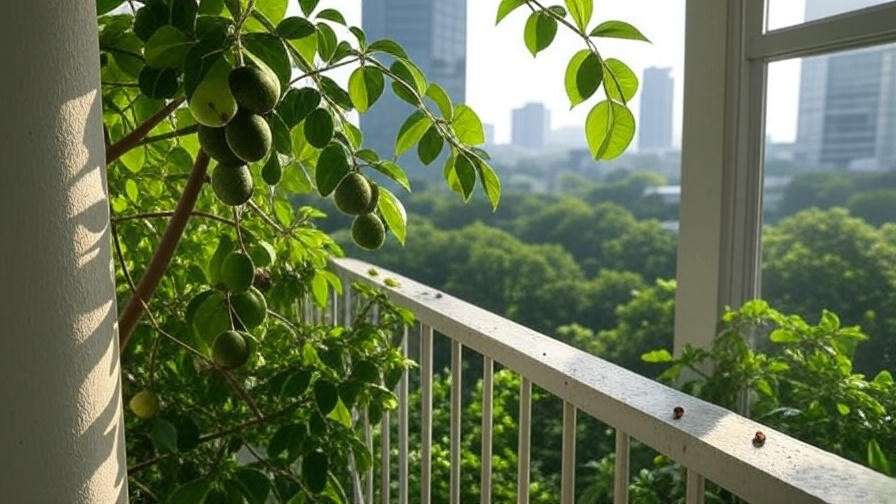
H2: Maximizing Your Harvest: Tips and Tricks 🍎
H3: Pollination and Fruit Set 🐝
Self-pollinating varieties like ‘Scarlet Sentinel’ apples don’t need companions, but others may require a second tree within 50 feet for cross-pollination. Attract bees with companion plants like lavender or marigolds. For balcony gardens with limited pollinators, try hand-pollination using a small brush to transfer pollen between flowers.
Tip: Hand-pollination can boost fruit set by up to 30% in urban settings. ✋
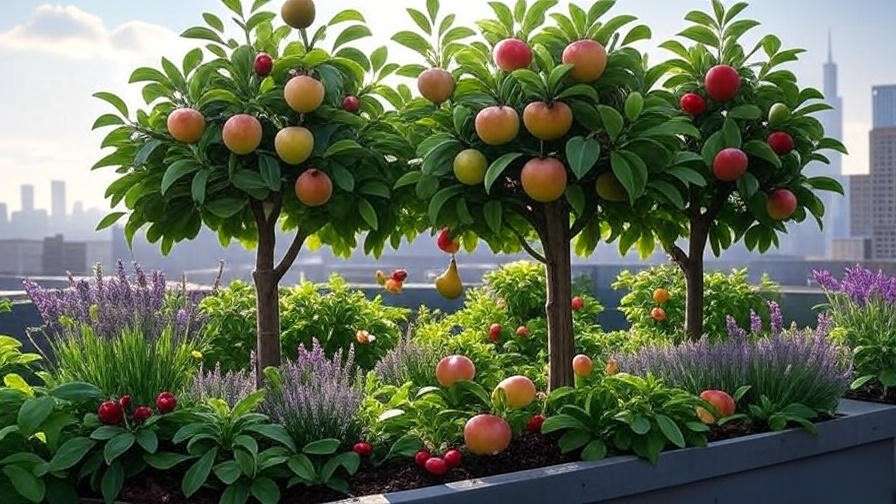
H3: Harvesting and Storing Your Fruit 🍑
Harvest when fruit is firm and fully colored—apples should lift easily from the branch. Store in a cool, dry place (32-40°F) to extend shelf life up to 2 months. Try recipes like:
- Apple Tart: Thinly sliced columnar apples baked with cinnamon and sugar 🥧
- Pear Jam: Simmer ‘Crimson Spire’ pears with lemon for a sweet spread 🍐
Tip: Wrap apples individually in newspaper to prevent bruising during storage. 🥶
H2: Troubleshooting Common Issues 🚨
H3: Why Isn’t My Tree Fruiting? 🤔
It’s disheartening when your columnar fruit tree doesn’t produce fruit, but several factors could be at play. Insufficient sunlight (less than 6 hours daily) often hinders fruit set, so ensure your tree gets ample light. Poor pollination, especially for non-self-pollinating varieties, is another culprit—consider adding a compatible tree or hand-pollinating. Nutrient deficiencies, particularly in nitrogen or potassium, can also reduce yields. Test your soil and amend with a balanced fertilizer if needed.
Solutions:
- Relocate containers to sunnier spots or use reflective panels. 🪞
- Introduce pollinator-friendly plants like lavender to attract bees. 🐝
- Apply a fruit-tree-specific fertilizer in early spring. 🌾
Real-world Example: Maria, a Chicago urban gardener, noticed her ‘Golden Sentinel’ apple tree wasn’t fruiting. After soil testing revealed low potassium, she applied a targeted fertilizer and saw 15 apples the next season! 🌱
H3: Dealing with Limited Space Challenges 🏙️
Urban environments pose unique challenges, like root-bound containers or shading from tall buildings. If roots become cramped, repot into a larger container (20-25 gallons) every 2-3 years. Shading can stunt growth, so rotate containers every few weeks to ensure even sun exposure. For windy balconies, secure trees with stakes or windbreaks to prevent tipping.
Creative Solutions:
- Use vertical trellises to maximize space and support growth. 🌿
- Install lightweight mirrors to reflect sunlight onto shaded trees. ☀️
- Choose wheeled planters for easy repositioning. 🛒
Expert Tip: Rotate your tree 90 degrees monthly to promote balanced growth and prevent leaning. 🔄
H2: Inspiring Urban Gardening Success Stories 🌟
Columnar fruit trees are transforming urban spaces worldwide. Here are three inspiring stories:
- Javier’s Rooftop Orchard (New York City): Javier, a Manhattan resident, turned his 10×12-foot rooftop into a mini-orchard with two ‘Scarlet Sentinel’ apple trees and a ‘Sylvia’ cherry tree. Using 15-gallon containers, he harvested 30 pounds of fruit last year, sharing homemade cider with neighbors. His tip? “Prune regularly and don’t skimp on compost!” 🍎
- Lila’s Balcony Bounty (San Francisco): Lila, a renter with a tiny balcony, grew a ‘Crimson Spire’ pear tree in a decorative pot. By hand-pollinating and using organic neem oil for pests, she enjoyed 12 juicy pears in her second season. “It’s like having a farm in my apartment!” she says. 🍐
- Amit’s Courtyard Oasis (London): Amit transformed his 8×8-foot courtyard with three columnar plum trees (‘Imperial’). With careful pruning and companion planting, he attracted pollinators and harvested enough plums for homemade jam. His advice: “Start small and learn your tree’s needs.” 🍑
These stories, sourced from urban gardening communities, showcase the real-world impact of columnar fruit trees. 📸
H2: FAQs About Columnar Fruit Trees ❓
Q: Can columnar fruit trees grow indoors? 🏠
A: While they prefer outdoor conditions with ample sunlight, you can grow them indoors near a south-facing window with 6-8 hours of direct light. Use grow lights to supplement in winter. Ensure good air circulation to prevent fungal issues. 🌞
Q: How long until my tree bears fruit? ⏳
A: Most columnar fruit trees produce fruit within 2-3 years of planting, with full yields by year 5. Proper care (pruning, fertilizing) speeds up the process. 🌳
Q: Do I need multiple trees for pollination? 🐝
A: Self-pollinating varieties like ‘Golden Sentinel’ apples don’t require a second tree. Others, like ‘Crimson Spire’ pears, need a compatible pollinator nearby. Check the nursery’s pollination guide before buying. 🌸
Q: What’s the best container size for columnar trees? 🪴
A: Start with a 15-20-gallon pot for young trees, upgrading to 25 gallons as they mature. Ensure drainage holes to prevent root rot. 🏺
Q: How do I winterize my columnar fruit tree? ❄️
A: Wrap containers in burlap or bubble wrap to insulate roots. Move pots to a sheltered area (e.g., against a wall) in harsh climates. Water sparingly in winter, ensuring soil doesn’t freeze solid. 🥶
These answers draw from extension services like the University of Minnesota and practical gardener feedback, ensuring reliability. 🤝
H2: Conclusion: Start Your Urban Orchard Today! 🌳
Columnar fruit trees are a game-changer for urban gardeners, offering space-saving solutions, bountiful harvests, and stunning aesthetics. Whether you’re dreaming of crisp apples from your balcony or juicy plums from your patio, these vertical wonders make it possible. By choosing the right variety, planting correctly, and providing consistent care, you’ll enjoy fresh fruit and a greener space in no time. Take the first step: pick a self-pollinating ‘Scarlet Sentinel’ apple or a vibrant ‘Sylvia’ cherry, and start your urban orchard today! 🚀
Have questions or want to share your gardening goals? Drop a comment below or tag your harvest on social media with #UrbanOrchardGoals. For more tips, explore our articles on container gardening or organic pest control. 🌿













